Research Briefs
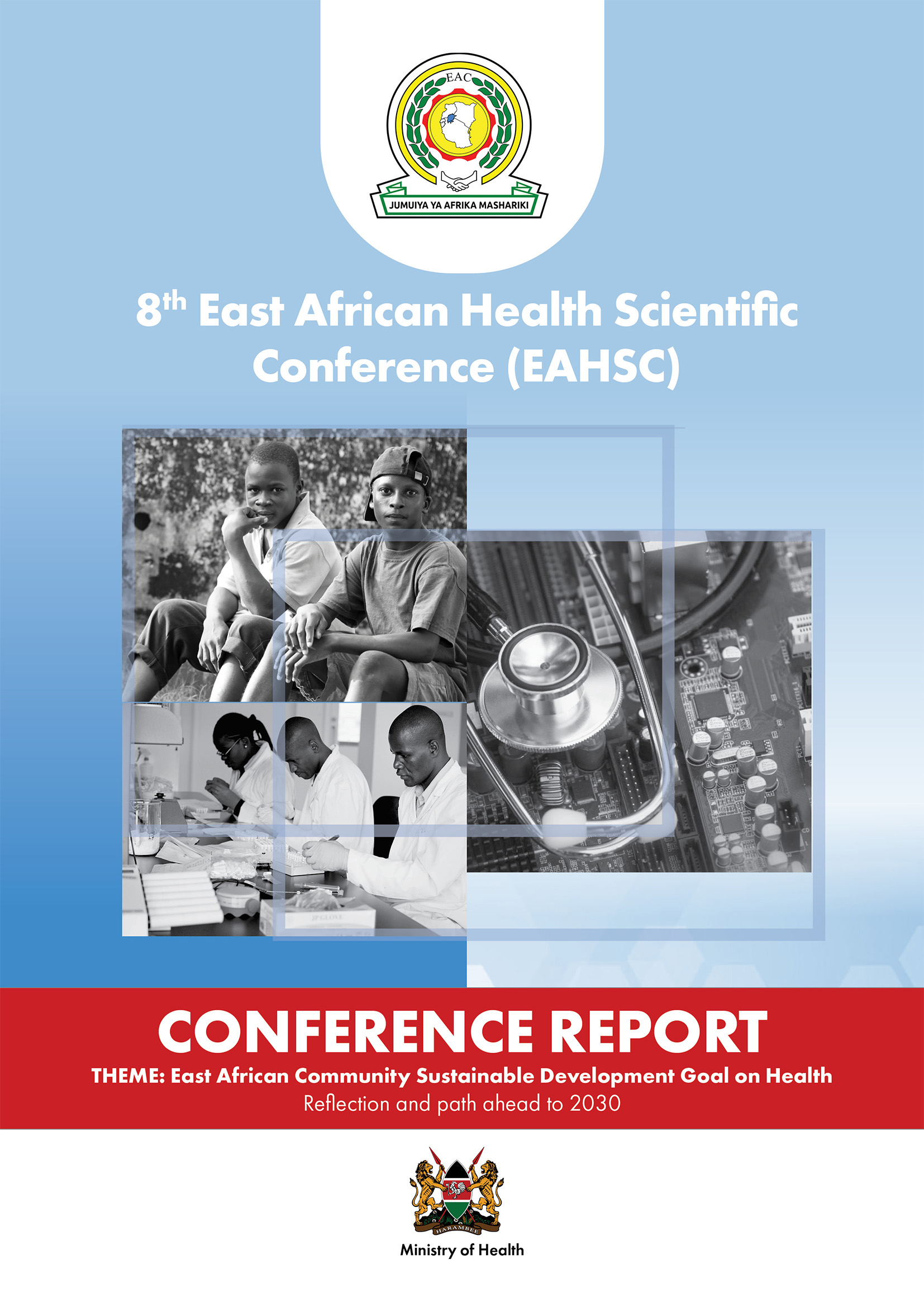
The East African Health and Scientific Conference (EAHSC) is a bi-annual event organized by the East African Health Research Commission (EAHRC) and East Africa Community (EAC) Partner States. Its main objective is to promote the application of research as well as strengthen regional cooperation in health in line with Article 118 of the Treaty of Establishment of the EAC.
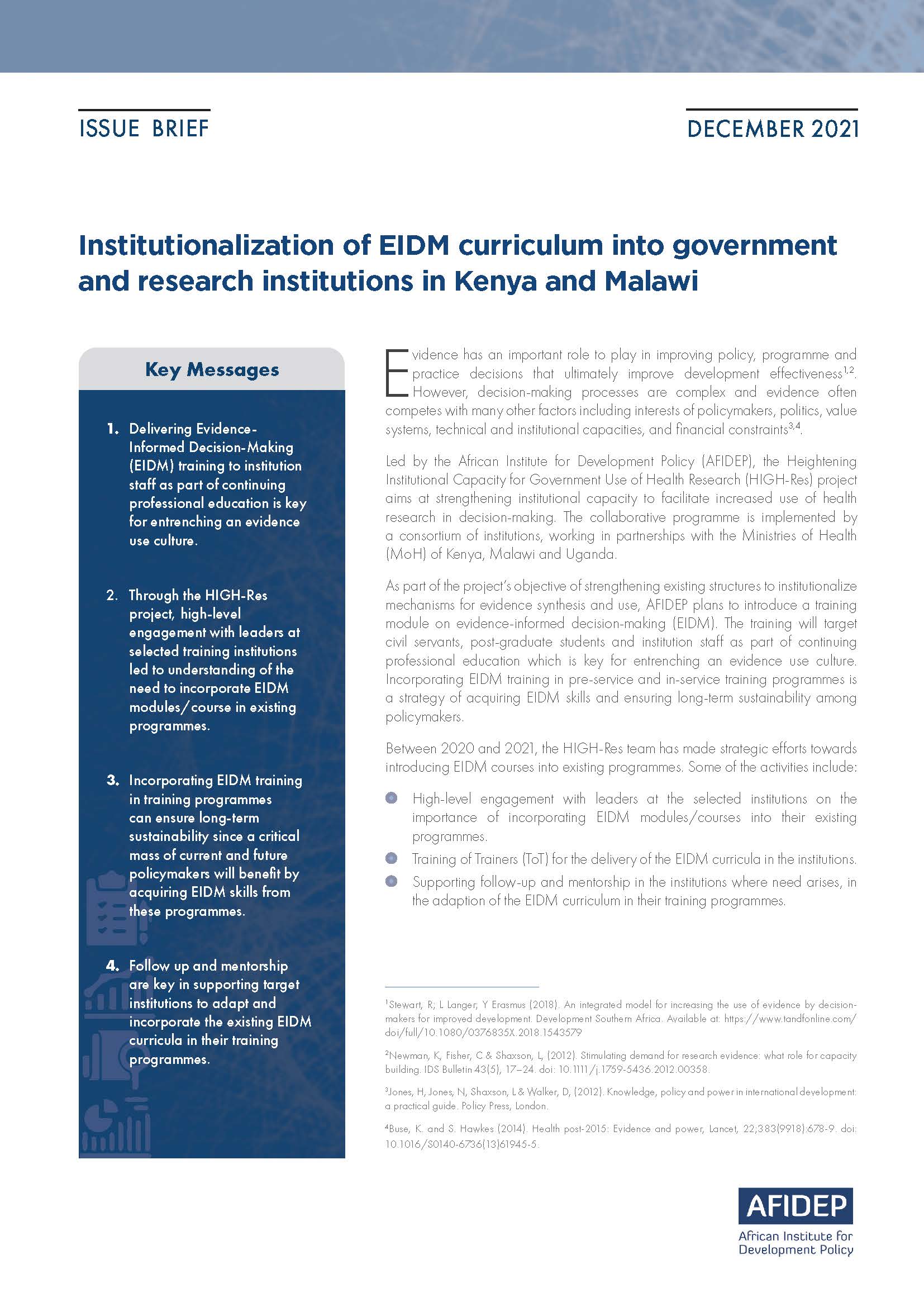
This issue brief presents efforts by the Heightening institutional capacity for government use of health research (HIGH-Res) project (led by AFIDEP) to introduce a training module on evidence-informed decision-making (EIDM) in select institutions in Kenya and Malawi targeting technical-level staff. As part of continuing professional education, the EIDM training will serve to entrench an evidence use culture.
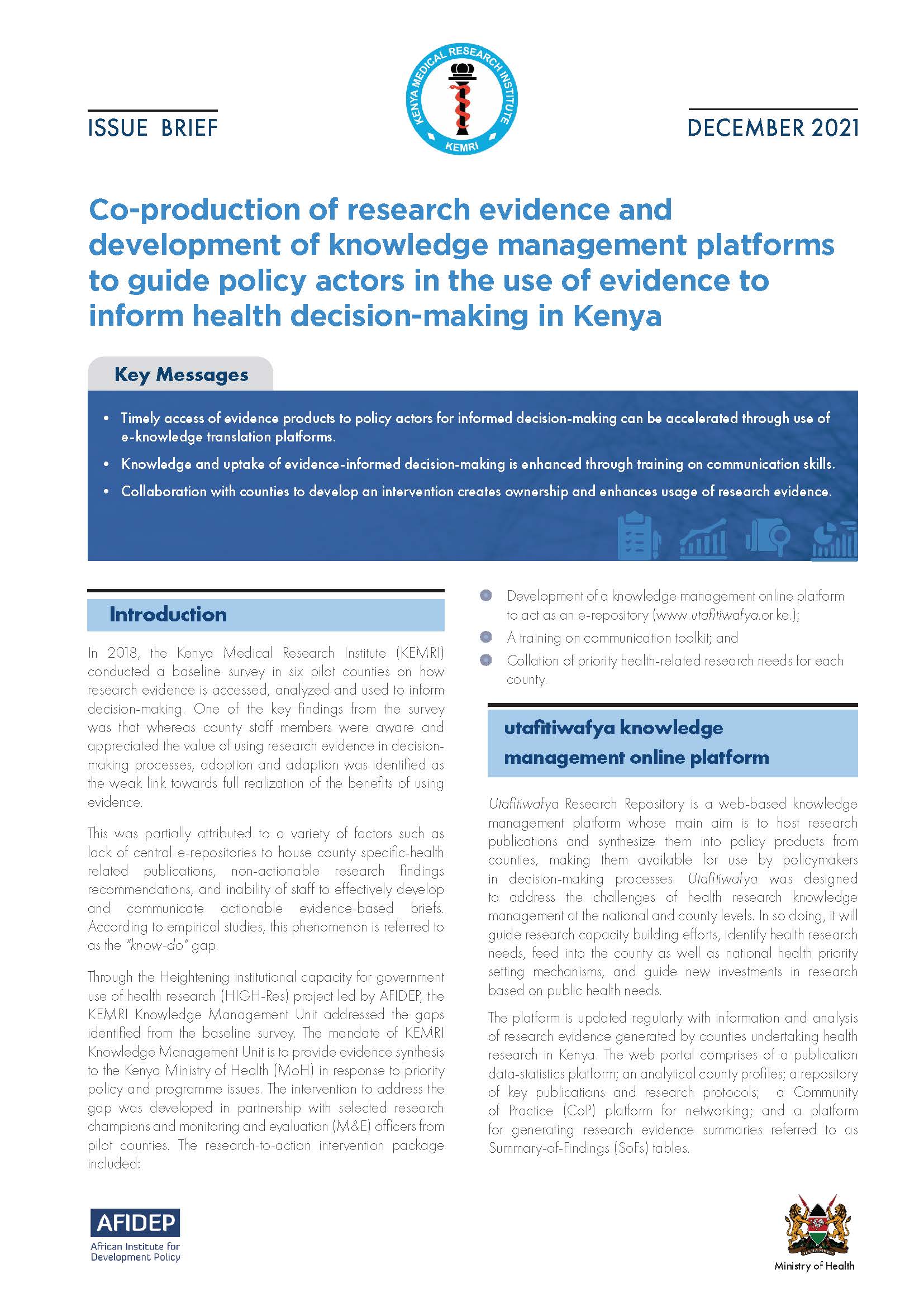
This issue brief highlights interventions under the Heightening institutional capacity for government use of health research (HIGH-Res) project (led by AFIDEP) to address the gaps identified in the baseline survey. The interventions were developed in partnership with KEMRI, Ministry of Health, selected research champions and monitoring and evaluation (M&E) officers from the pilot counties.
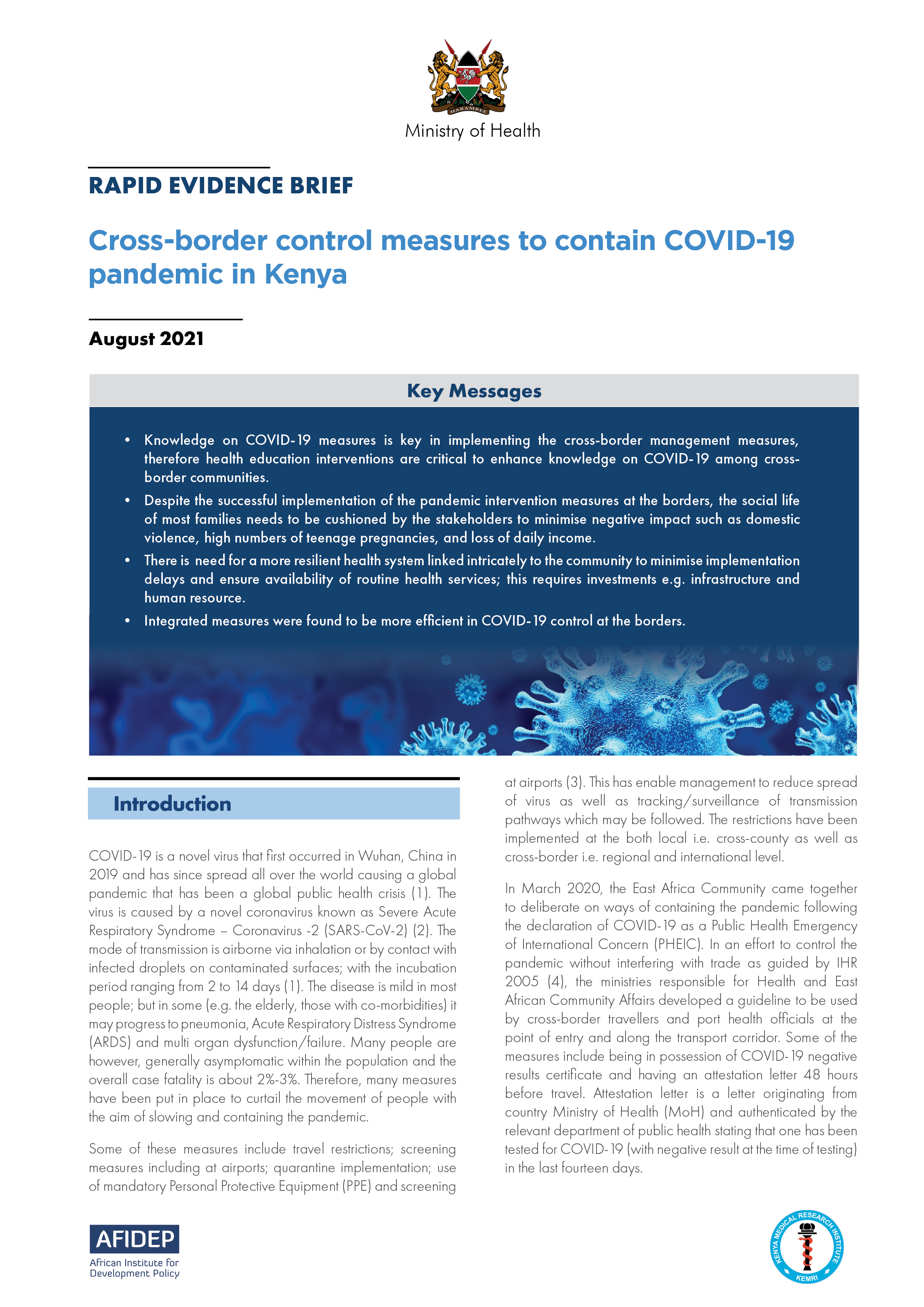
This rapid evidence brief summarises the key messages and recommendations on cross-border measures to contain COVID-19 pandemic in Kenya, presented at the 11th KEMRI Annual Scientific Conference. The evidence summary suggests that travel-related control measures during the COVID-19 pandemic may have a positive impact on infectious disease transmission and screening-related outcomes. However, as the pandemic progresses and efforts in countries including Kenya to ensure up-to-date vaccination for travelers and community at large, vaccination checks at the port of entries might be considered.
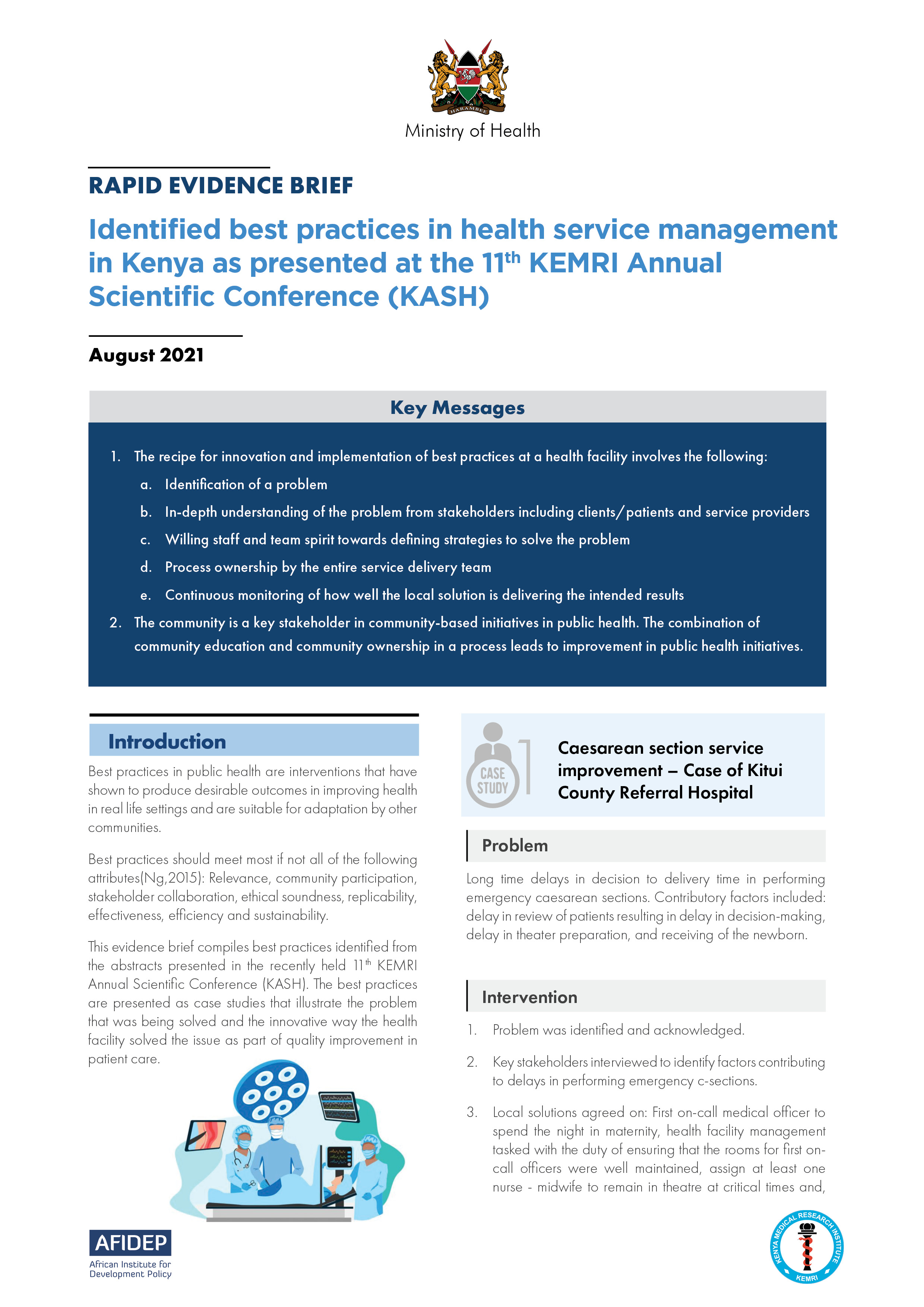
Best practices in public health are interventions that have shown to produce desirable outcomes in improving health in real-life settings and are suitable for adaptation by other communities. This rapid evidence brief summarises cases studies presented at the 11th KEMRI Annual Scientific Conference. The case studies demonstrate that it is possible for health facilities to determine local solutions that impact on how service delivery is conducted resulting in improved outcomes. These case studies have the potential for scalability in that the issues to which they provide solutions to are public health issues faced in other parts of the country.

There are ten health-related institutional websites that qualify to be Knowledge Management platforms. They are classified into three categories to include; portals, platforms and repositories with access links. Lack of linkages and coordination is a major gap and hindrance to access evidence for health decision-making as well as failure to identify research for health priorities. This rapid evidence brief summarises the key messages and recommendations presented at the 11th KEMRI Annual Scientific Conference on health Knowledge Management platforms in Kenya.
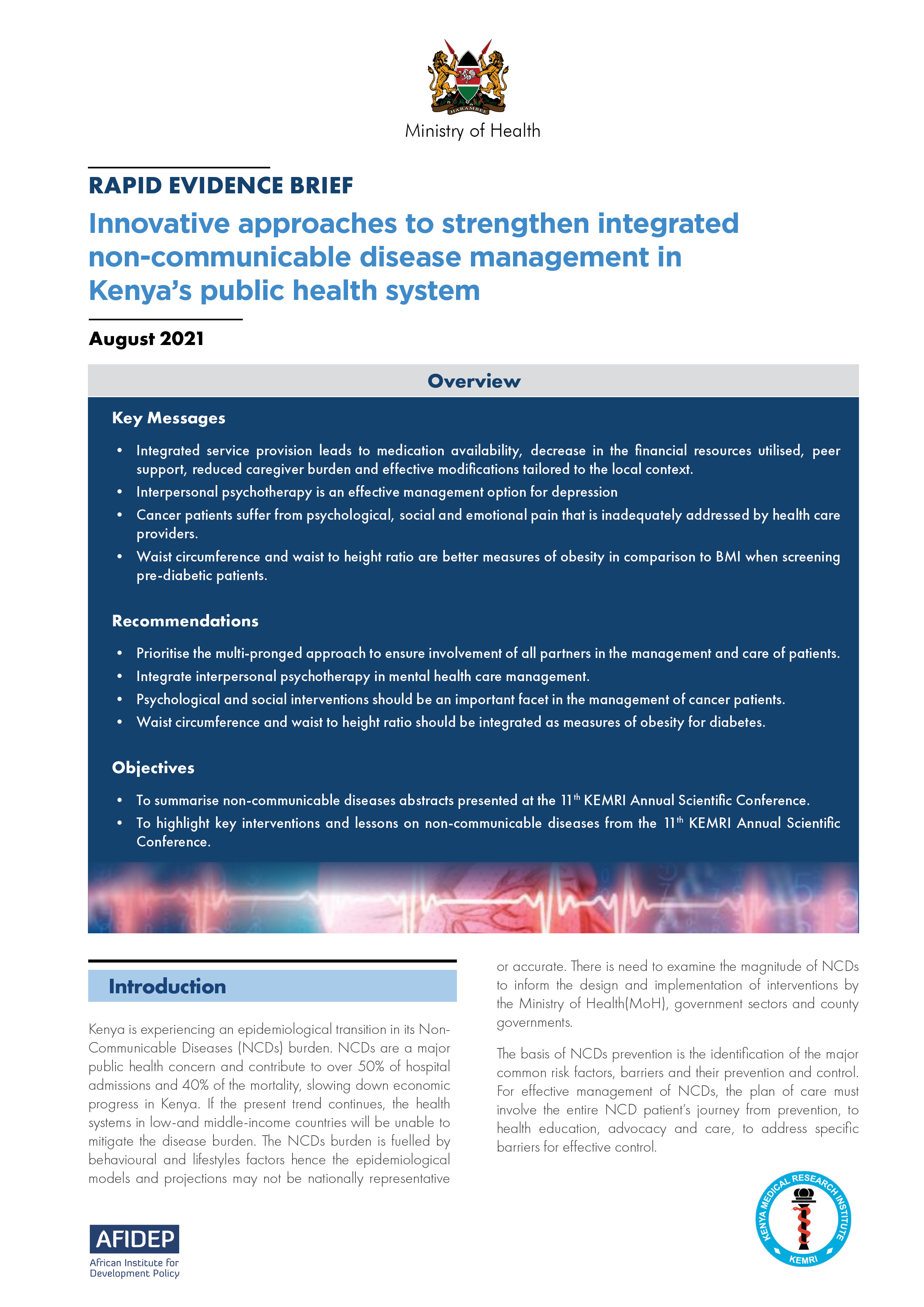
Kenya is experiencing an epidemiological transition in its Non-Communicable Diseases (NCDs) burden. NCDs are a major public health concern and contribute to over 50% of hospital admissions and 40% of mortality, slowing down economic progress in Kenya. If the present trend continues, the health systems in low-and middle-income countries will be unable to mitigate the disease burden. This rapid evidence brief summarises the key messages, recommendations and objectives presented at the 11th KEMRI Annual Scientific Conference on Non-Communicable Diseases (NCDs) in Kenya’s public health system.
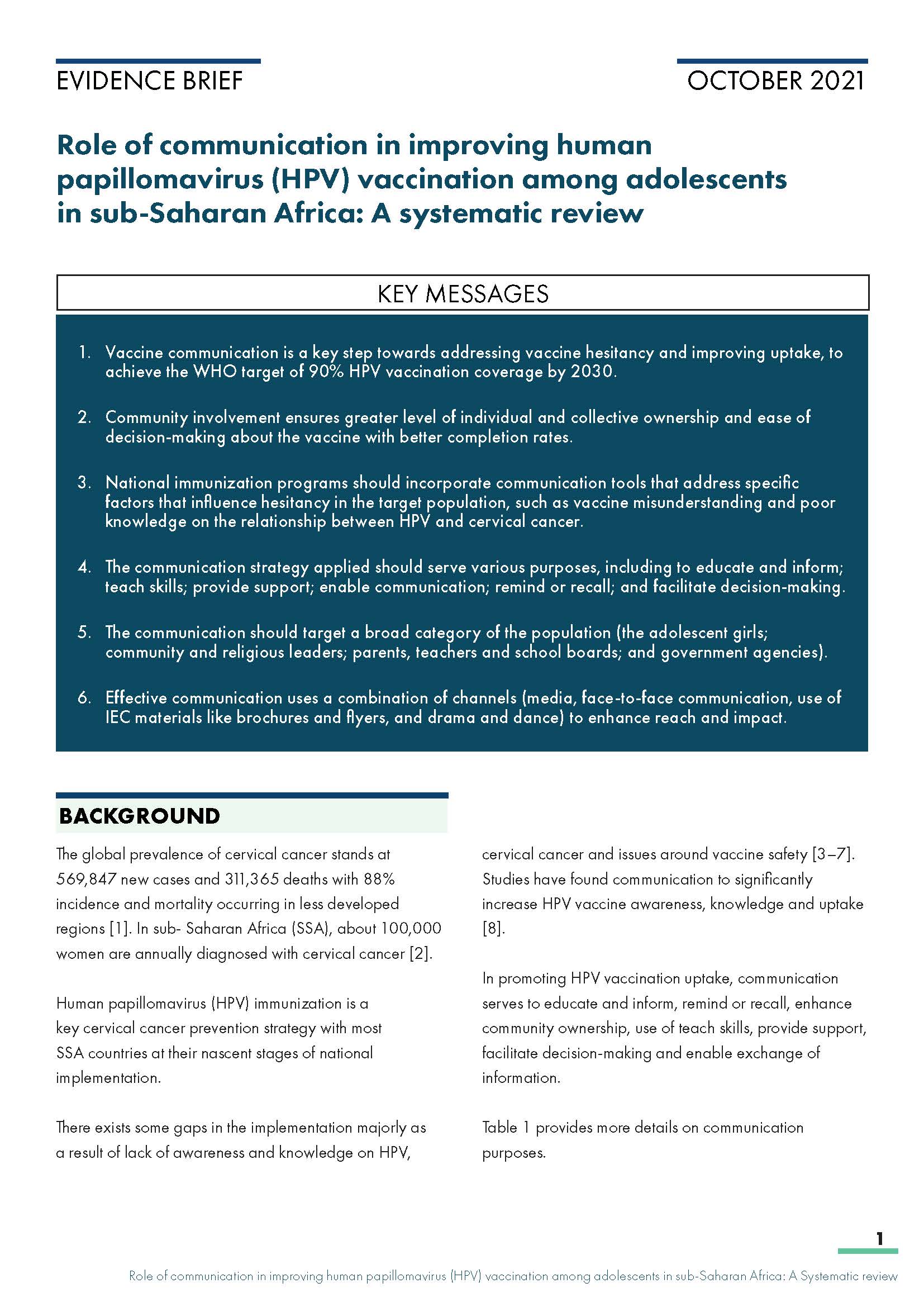
Human papillomavirus (HPV) immunization is a key cervical cancer prevention strategy with most sub-Saharan African (SSA) countries at their nascent stages of national implementation. In the fight against cervical cancer especially prevention, communication is key in addressing vaccine hesitancy and improving uptake. This rapid evidence brief provides a summary of the communication strategies employed to promote HPV vaccination among adolescents in SSA and accelerate efforts to achieve the WHO target of 90% HPV vaccination coverage by 2030.
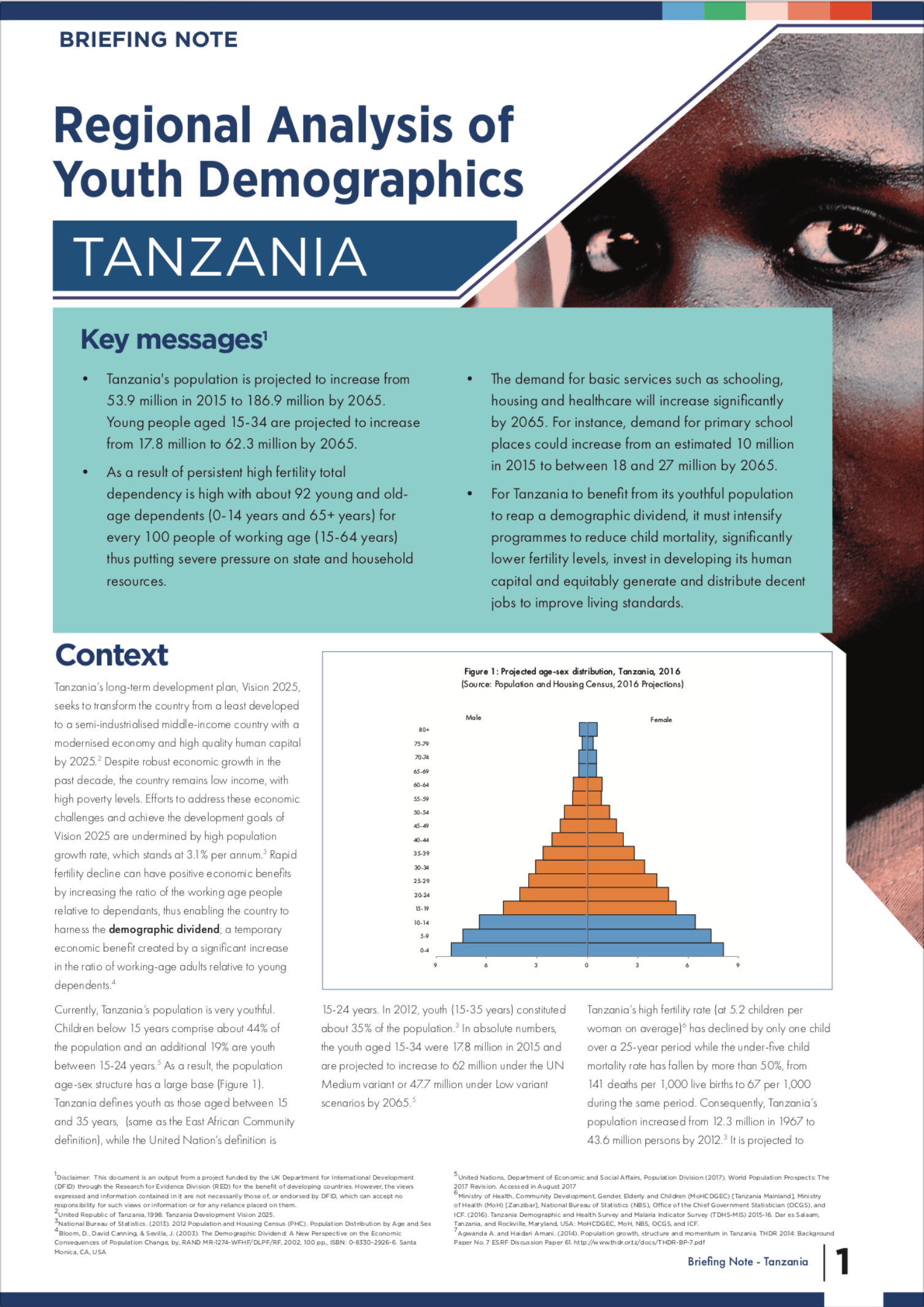
The East African Regional Analysis of Youth Demographics study examined youth population dynamics, policies and other economic and natural challenges in Kenya, Rwanda, Tanzania and Uganda and the impact they can have on the socioeconomic transformation of a country. The compilation and production of this research uptake report is a culmination of various research communication and engagement forums attended by a cross-section of stakeholders in the field of development from the East African Community (EAC) and beyond.
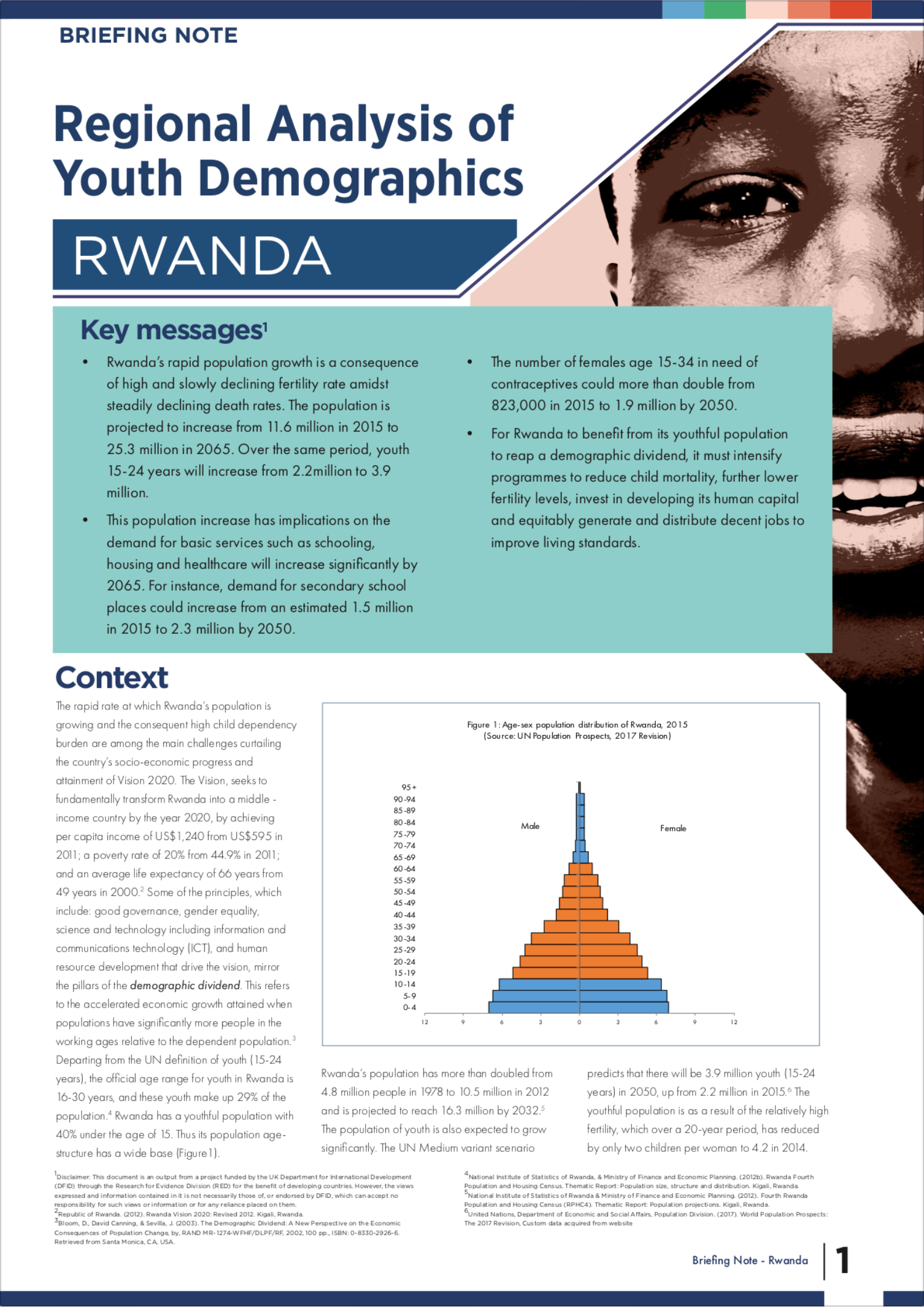
This briefing note summarises a review of literature and policies on youth demographics and implications from our scenario modelling of the short, medium and long-term projections of the youth population in Rwanda, and their demand for essential services.
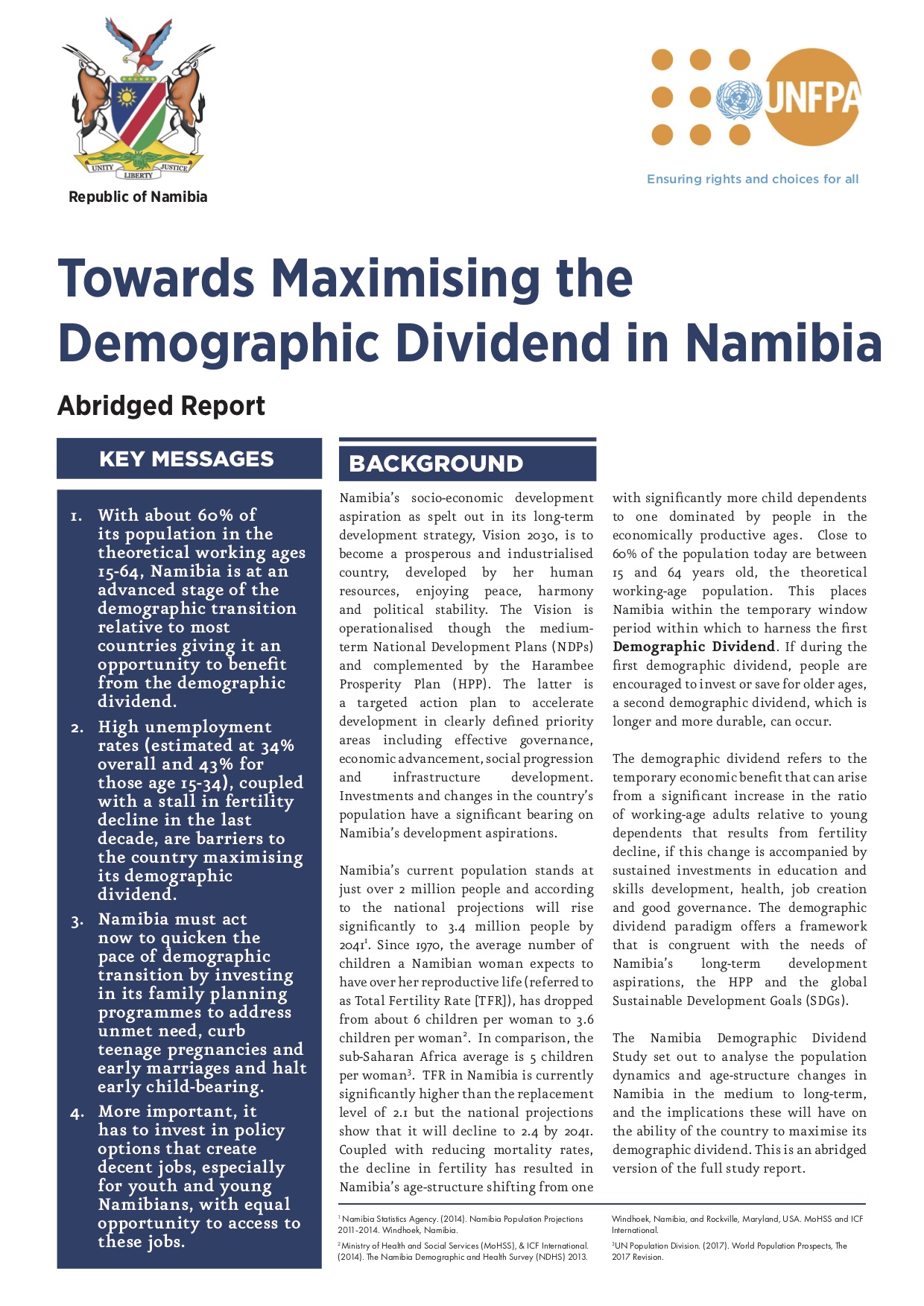
The primary objective of this study was to assess Namibia’s prospects for harnessing the demographic dividend and to identify priority options for maximising the dividend. Demographic change has implications for the realisation of these ambitions. This report, therefore, outlines the key policy recommendations on how Namibia can harness the potential of her youthful population to achieve socio-economic development. The Demographic Dividend paradigm offers a framework that is congruent with the needs of Namibia’s long-term development aspirations as well as the global Sustainable Development Goals (SDGs).
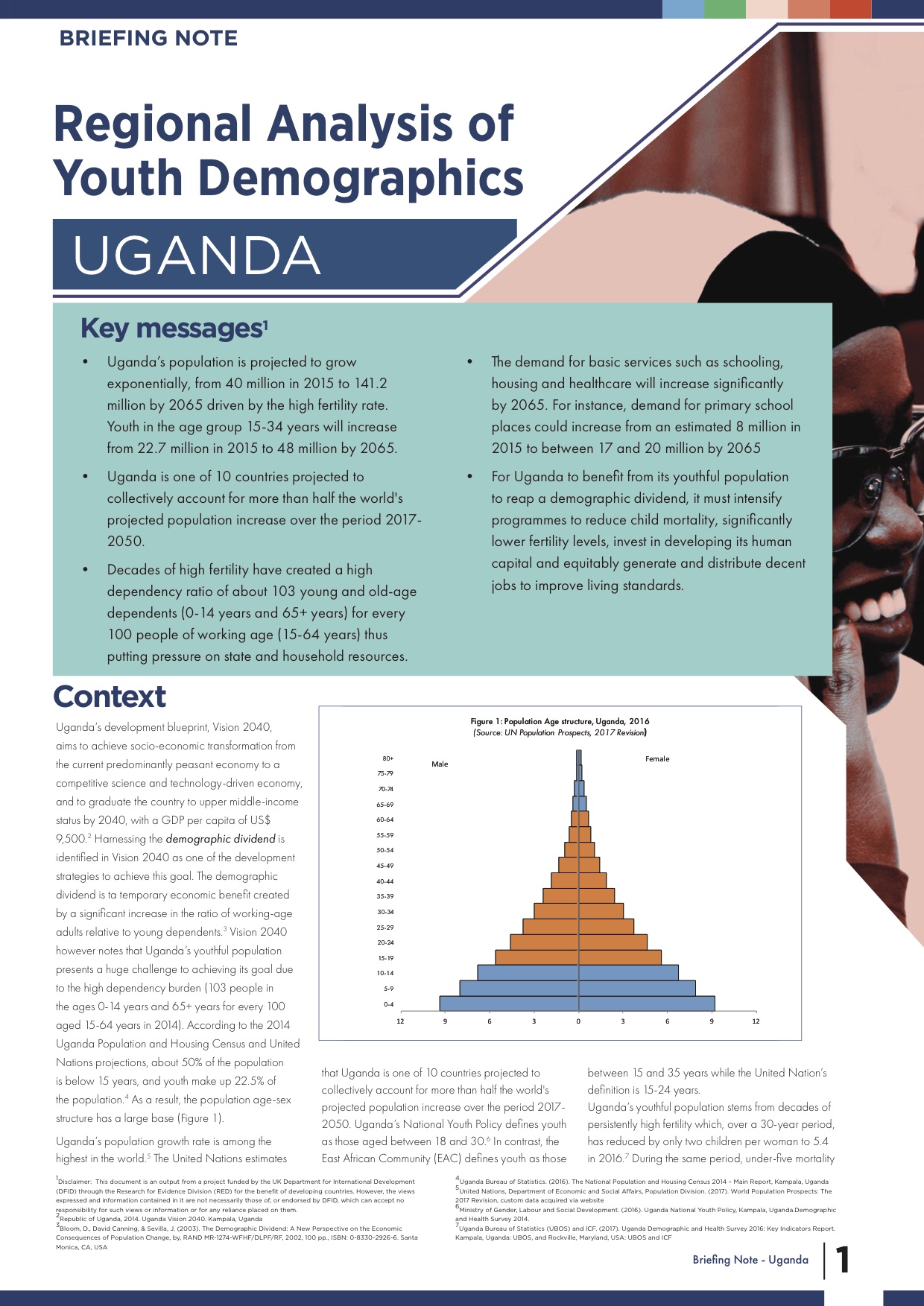
This briefing note summarises a review of literature and policies on youth demographics and implications from our scenario modelling of the short-term and medium-term projections of the youth population in Uganda. Specifically, the briefing note highlights the demand for basic services against population projections.

